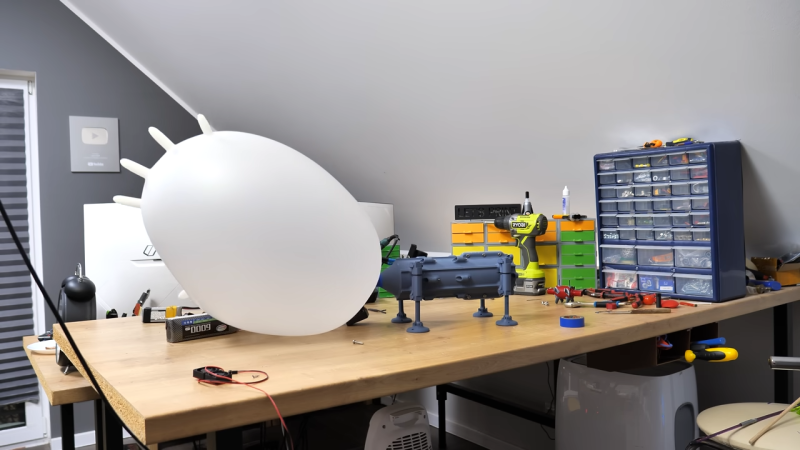[Let’s Print] has been fascinated with creating a 3D printed axial compressor that can do meaningful work, and his latest iteration mixes FDM and SLA printed parts to successfully inflate (and pop) a latex glove, so that’s progress!
 Originally, the unit couldn’t manage even that until he modified the number and type of fan blades on the compressor stages. There were other design challenges as well. For example, one regular issue was a coupling between the motor and the rest of the unit breaking repeatedly. At the speeds the compressor runs at, weak points tend to surface fairly quickly. That’s not stopping [Let’s Print], however. He plans to explore other compressor designs in his quest for an effective unit.
Originally, the unit couldn’t manage even that until he modified the number and type of fan blades on the compressor stages. There were other design challenges as well. For example, one regular issue was a coupling between the motor and the rest of the unit breaking repeatedly. At the speeds the compressor runs at, weak points tend to surface fairly quickly. That’s not stopping [Let’s Print], however. He plans to explore other compressor designs in his quest for an effective unit.
Attaching motor shafts to 3D printed devices can be tricky, and in the past we’ve seen a clever solution that is worth keeping in mind: half of a spider coupling (or jaw coupling) can be an economical and effective way to attach 3D printed things to a shaft.
While blowing up a regular party balloon is still asking too much of [Let’s Print]’s compressor as it stands, it certainly inflates (and pops) a latex glove like nobody’s business.
















Could this be adapted into an open source turbo vacuum pump? Probably would need to use a piece of pipe as the sealed housing.
Party balloons are more difficult to inflate than latex gloves?
I guess you really do learn something new every day.
Party balloons are harder to inflate when they are fully deflated than they are when they are already partially inflated.
One immediately noticeable (future) issue is that the fans were designed as if they were metallic parts and 3D printed to try and match those requirements, rather than designed for 3D printing. i.e. the blades were designed as individual wedge-fit items and printed ‘standing’, which leaves a nice finish but means the forces on the rotating blade are perfectly aligned to shear the layers apart. By printing the blades and fan body as a single monolithic item (known as a ‘blisk’ or bade-disk) you both eliminate an assembly step, and you can align the layers perpendicular to the primary force trying to tear the fan apart at high RPMs. Careful choice of infill and wall order to maximise extrusion travels to be radial (hub-to-tip) rather than axially (around the fan) would further maximise part strength and allow for maximum RPM before failure.
Careful with couplings. Have been many deaths throughout history from failures. Anti-flail flexible disk pack from Kopflex too expensive?
Should start with a difference of one between numbers of stationary and rotating blades. Never the same as in rotating sirens. As for bladed disk vibration see my linkedin paper refs. Pioneered equations used for interference diagrams.
“Frank Kushner”